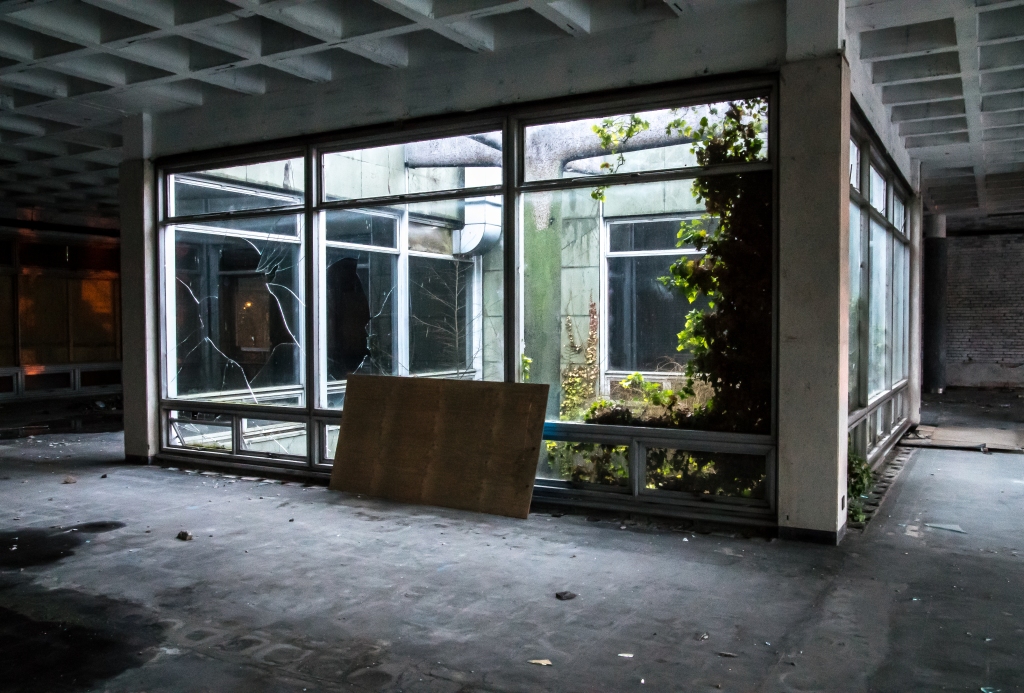Publikum – Hi Kev would you mind starting by talking a little bit about yourself? In various interviews you mentioned that you’ve worked in creative industries for most of your life, what was the motivation behind start the project Shouldn’t Throw Stones?
Kev Casey– I am born and raised in Liverpool. After finishing school I completed an Art Foundation from Hugh Baird College (Bootle), the 2nd phase of the course I specialised in photography. After a 1 year stint at what was then called The Surrey institute of Art & Design (Farnham) I transferred and later became a Photography graduate (BA Hons) and Fine Art (M.A.) at The University of Sunderland.
After returning to Merseyside via a brief stint on the dole I became a Gallery assistant and then Gallery Supervisor at FACT (Foundation for Art and Creative Technology). During this period I was obtaining my PGCE teaching certificate, freelancing in Photography/Video and completing my 1st published work ‘Closing Time’ – The Lost Pubs Of Liverpool (The Bluecoat Press 2010). You can hear Kev’s interview with BBC Merseyside Radio here.

The motivation behind Shouldn’t Throw Stones – The view of a Night Watchman was predominantly that it was the location of my place of work. After several years of service at FACT, the Director decided to make the front of house team redundant in order to save costs; don’t you find it a coincidence that when NPO or large Arts organisations run into financial trouble it is always the minimum wage staff who seem to lose their jobs and never any senior managers?
Unemployed and with two young children, I needed a job. I had a contact who worked with a variety of property companies who mentioned a site in St Helens (Merseyside) who needed a security guard to work nights. I had no idea that it was an ex HQ for Pilkingtons Glass, or that it was a 32 acre complex with several interconnecting buildings, tunnels, lakes, basements and open land.
The motivation to begin the project started almost instantly.

P. – In your interview with Laura Robertson – you mention that working in security is a new experience for you and how photography is utilised as a narrative tool. You’ve described your working experience as one of “isolation”, did you have any specific encounters that influenced the direction you took with this project?
K. – Not consciously, I suppose you could say it was the lack of encounters that influenced the direction of the project. The images and use of my camera was initially used as a navigation tool so I did not get lost on the site, as it has a maze-like quality.
As time went on I began to discover more hidden rooms, archive materials and places of interest. Along with historical references and research into the site and Pilkington’s as a company town, the project grew from there. I decided that you could create thousands of different projects through the memories and politics of others associated with the company throughout the decades.
This is something I looked into at a later stage, but I decided the most honest approach was to tell my own story from my own perspective, putting myself as the focus of the subject, a first in my work. Once I (mostly) got over the awkwardness of putting myself as the point of interest alongside the landscape the project began to take shape.

P. – You mention the importance of creating work that reflects your environment and the role that cultural change maintains in photography. The photos included in Shouldn’t Throw Stones alludes to liminality in your work, was this intentional or a natural occurrence of documenting the type of environment you was in?
K. – I suppose by proxy liminality in a partly abandoned site that is deserted at night is natural. However, during the day time hours approximately 50% of the site is rented out as commercial office space to NHS, SME’s and charities. There could well be a different approach taken if I was a day time worker or decided to shoot the majority of the work when it was light.
I thought the fall from grace of the manufacturing industry, architecture and initial use of the site in the 1960’s was aptly mirrored by my role as guardian during the night. There is also a difference in intensity, with a combined feeling of peaceful, anxiety, eeriness and abandonment which essentially the act I undertake I am isolated and abandoned until morning.
P. In hindsight, what has been most enjoyable aspect about creating Shouldn’t Throw Stones? Which photos stand out to you the most and why?
K. – The most enjoyable aspects were being given the rare opportunity to gain access to the site. However, there were times when I had to be careful of outside agencies pushing me aside.
During the project I had many people and arts organisations who had failed previously try to gain access to the site through me as a contact. They would claim that they were fans of my work when I posted early images online and then tried to infiltrate the landscape and create their own project under the guise of collaboration whilst requesting to the owners of the site for me to be removed. This made the genuine collaborations I had feel even more special.
I was privileged to work with genuine writers, musicians, architects, drone pilots, sound artists, ex workers, local theatre groups and graphic designers who were invested the project in the interest of creating a great body of work. For me it was also a unique opportunity to combine my artistic practice with my day (or in this case night) job. I have never had the opportunity to be a full time arts practitioner as I always have had to take various jobs to pay the bills. This was a brief moment when the 2 worlds combined.
The photographs that stand out the most to me are the faded aerial photographic wall paper in one of the meeting rooms, it appears to be submerged by the heavy glass table in the foreground. Which, without trying to sound pretentious, is steeped in metaphor in relation to the manufacturing industry and the vision of a small town in Merseyside.

There are other images which show the opulence and bravado in the use of materials in
the buildings such as the gold tiled wall in the walkways. The front cover image from the
Old canteen also demonstrates a fall from grace.

The juxtaposition of nature versus built environment seemed to encapsulate the condition and fragility of what was once a manufacturing empire.
The futuristic ‘Modernist’ architecture is now in a state of abandonment with nature slowly starting to reclaim the landscape.

P. – Throughout Shouldn’t Throw Stones, you include portraits of colleagues and
their working environments, how receptive were your colleagues to this? At any
point did you distinguish yourself as a photographer, or was this compatible
with security work?
K. – From the 1st day I arrived I have always stated that my background was in photography and video. When talking to members of staff the majority were open to tell their story or experiences with the company. Although I do think that trust was built up over time. I would talk with other members of staff about me having to freelance of a daytime after a night shift.
The only part that was not agreed upon is that a lot of the older members of staff who had been here for decades did not think that the site would be of much interest. Grade listed artworks, unique architecture and the landscape of the ex HQ did not seem of much interest anymore as one member told me “I don’t get the fuss around the sculptures and materials and people wanting to gain access. When you see these things day in and day out for years on end it’s part of your routine, nothing special”.


P. – Strikingly, your photography style situates the audience at the photo’s focal point, a portrayal of the watchman’s journey, as they witness your internal monologue unfold. This approach allows the audience to derive their own narratives from the photos taken.
Was this a creative intention that arose in the book design process, or an intentional one at the time of taking the photos?
K. – It was not conscious at first. I was told by collaborators (co-publisher and graphic designer – Matt Lewis, and Laura Robertson) that I should not be so hesitant to put myself forward as the main subject in connection to work and that this would help to solidify the connection to the audience. We are both discovering the site together. At the time of writing I have now been here for 5 years, if I were to start the project today the approach may be very different to the one I took when first arriving.


P.- On this point, your photography approach is somewhat dualistic, the concept of the watchmen in Shouldn’t Throw Stones exists concurrently with the objects and environments being photographed. This narrative suggests that the two coexist with one another, as both a reflection of each other in your work.
How important was photography as the main medium used and the project being self-funded and self-produced for you in influencing this artistic direction?
K. – There are different elements to the work. Photography is the foundation, my main practice and the creation of the publication. However, once I was able to show the evolution of the work online, in presentations and to potential audiences it enabled me to develop the work even further. I was able to demonstrate that there was the potential to create further works through tours, videos, installations and displaying archive materials. This gave me the confidence to approach the Arts Council for a small amount of funding. After being rejected and then successful we were able to open up the site and experiment more with collaborators.
The photographic documentary/publication and early collaborations were self funded. The experience and stubbornness that a body of work would be created no matter what with the enthusiasm of collaborators fuelled the drive to continue to make work and then to approach galleries , museums and arts organisations.


P.- Lastly, if someone was to pursue this approach and seek to create their own self-funded work. What advice would you have for that person?
K. – Let the work and the reasons for doing so be the main motivator. I must have approached and been rejected from 30 different museums, galleries, arts organisations and funding bodies who either were not interested or would only undertake if they could remove me from the site and create their own work with an artist of their choice. Keep at it, be open to collaboration. If you believe in what you are doing it is tough without funding but not impossible. Or if all else fails and you have to have funding you could rob a bank.
… I’m not doing much for the Scouse stereotype and do not advocate robbing banks!
You can buy a physical copy of Shouldn’t Throw Stones: The View of a Night Watchman Here.

170gsm silk text, 104pp, / 215mm x 279mm.
To keep up to date with the work Kev is producing you can discover more using these links:
Instagram
Shouldn’t Throw Stones

You must be logged in to post a comment.